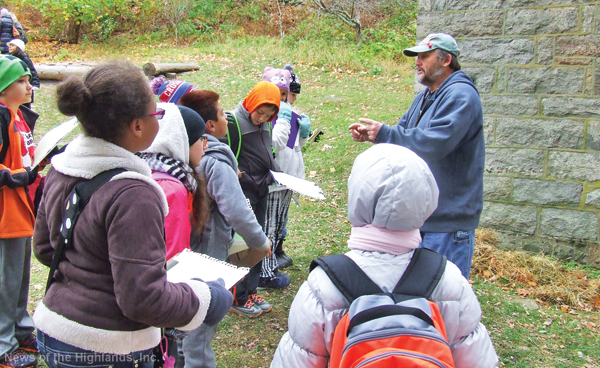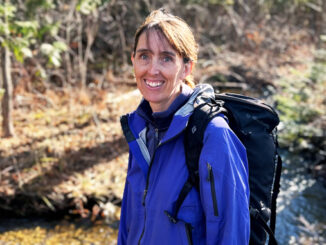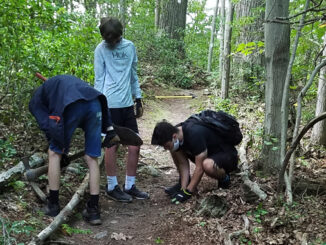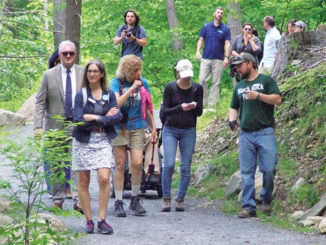
Earlier this month, students from all three fourth grade classes, at Willow Avenue Elementary School, put shovels to the earth in the hope of uncovering an artifact from the American Revolution.
Students prepared for the excavation adventure by visiting Black Rock Forest the week prior and creating a time line of events of local interest and national importance.
The day of the dig found them back in the forest, particularly near the former Continental Road, which, in the 18th century, ran through the forest and connected the New Windsor Cantonment with West Point.
Each class was given a different site to explore initially – one was a homestead, another was a place where charcoal was manufactured, and the third is known as The Bee Hive. Christine Cleeves, one of the teachers, said research is ongoing to determine what that site actually was.
Prior to beginning their search, students mapped out their site by flagging the boundaries rather than tying off ropes and creating quadrants. When an artifact was uncovered, measurements were taken in relation to the site boundaries.
Using archeological tools to dig, the fourth graders discovered a number of items including pieces of pottery, bricks, horse shoes, pieces of a tar roof, and old piece of leather, and pieces from what appears to be an old horse’s bridal.
By the end of the dig, each class had visited the three sites.
On Nov. 17, John Brady, manager of Black Rock Forest, and Jack Caldwell, operations manager and former science teacher in the Newburgh Enlarged School District, visited the students at their elementary school. They brought with them the uncovered artifacts so the students could clean and spend more time studying them.
Continuing their year-long study, the students will use books and the internet to research each artifact to learn more about them and ultimately provide thoughts on what the three sites were originally.
In February, the students will be studying the Revolutionary War, tying in the work they did over the last month. They’ll learn more about the road to West Point, what structures popped up along it and why, as well as why the roadway was ultimately dug up.



